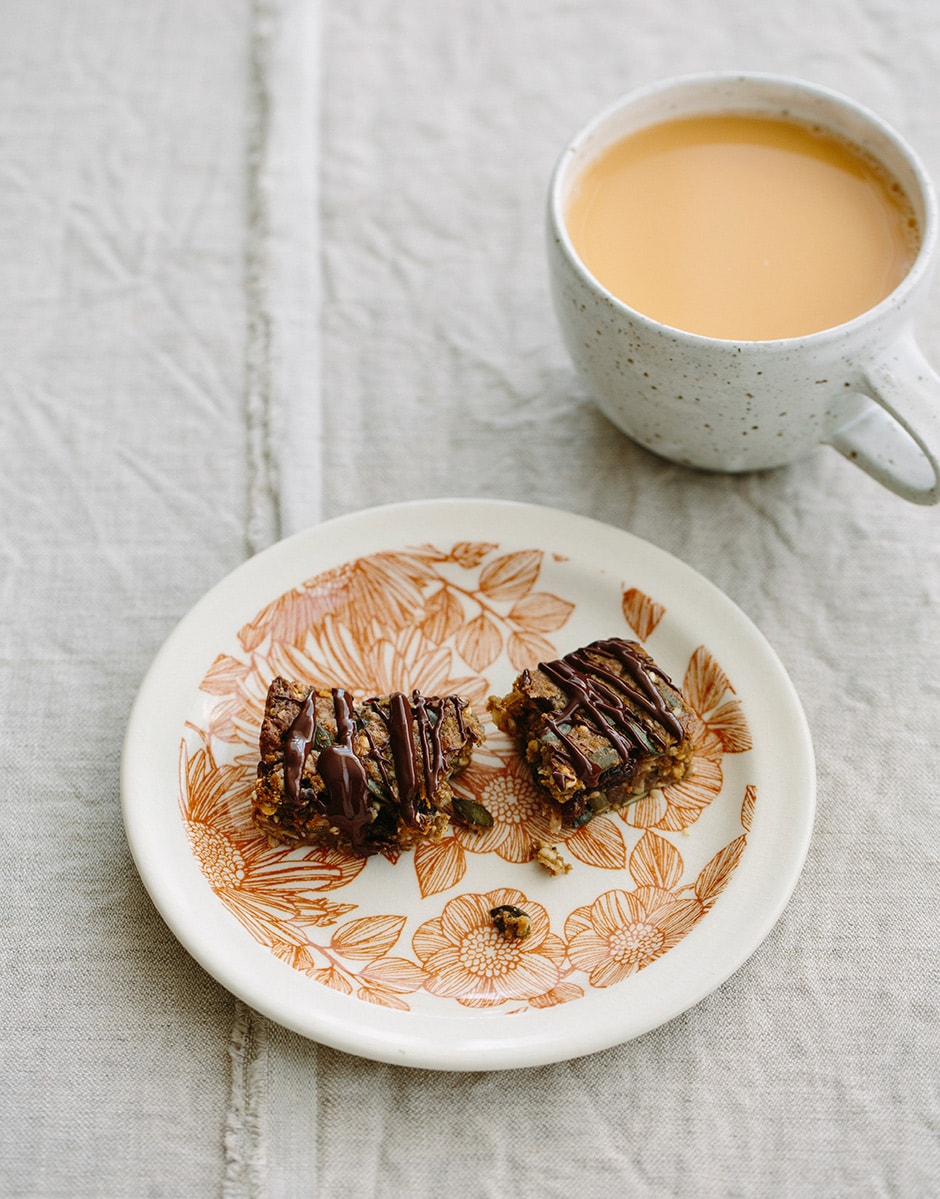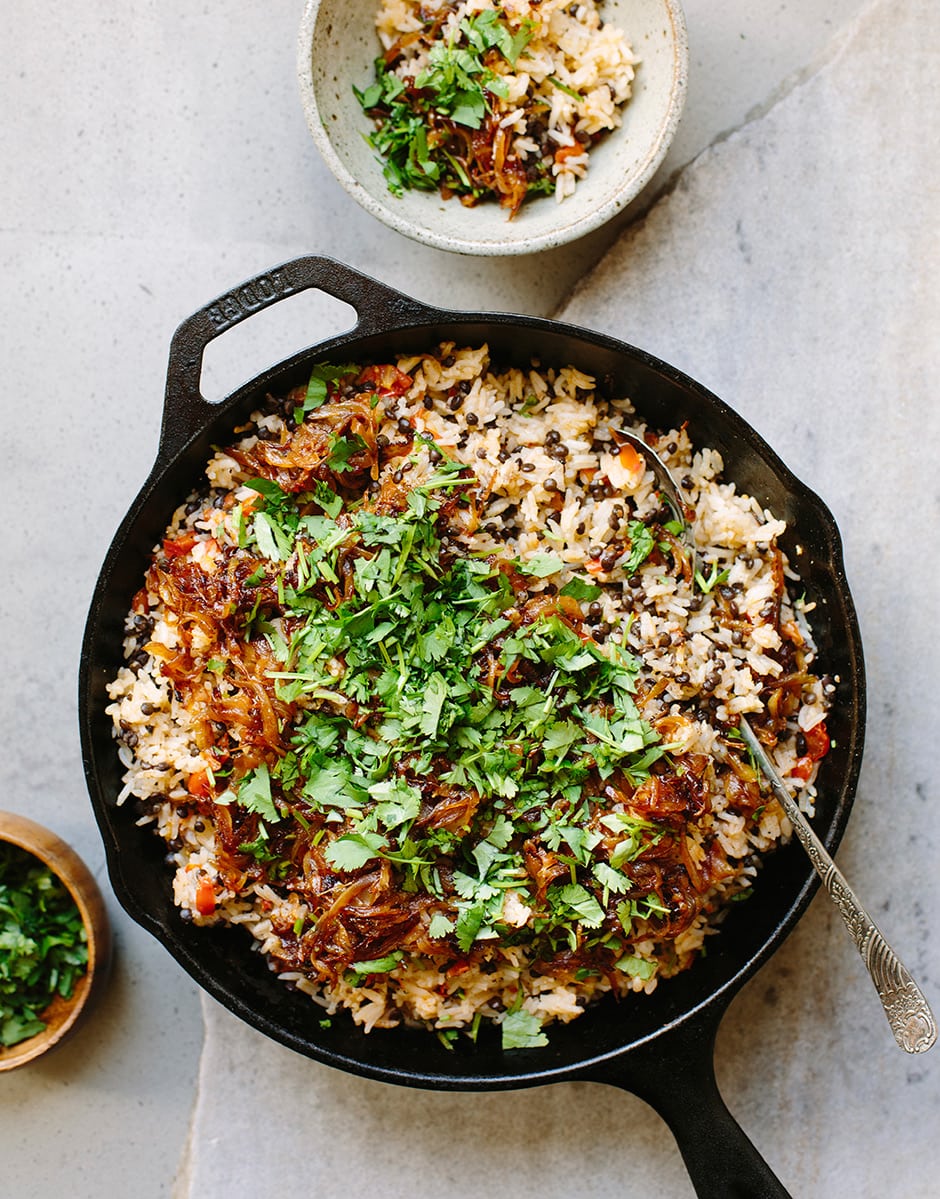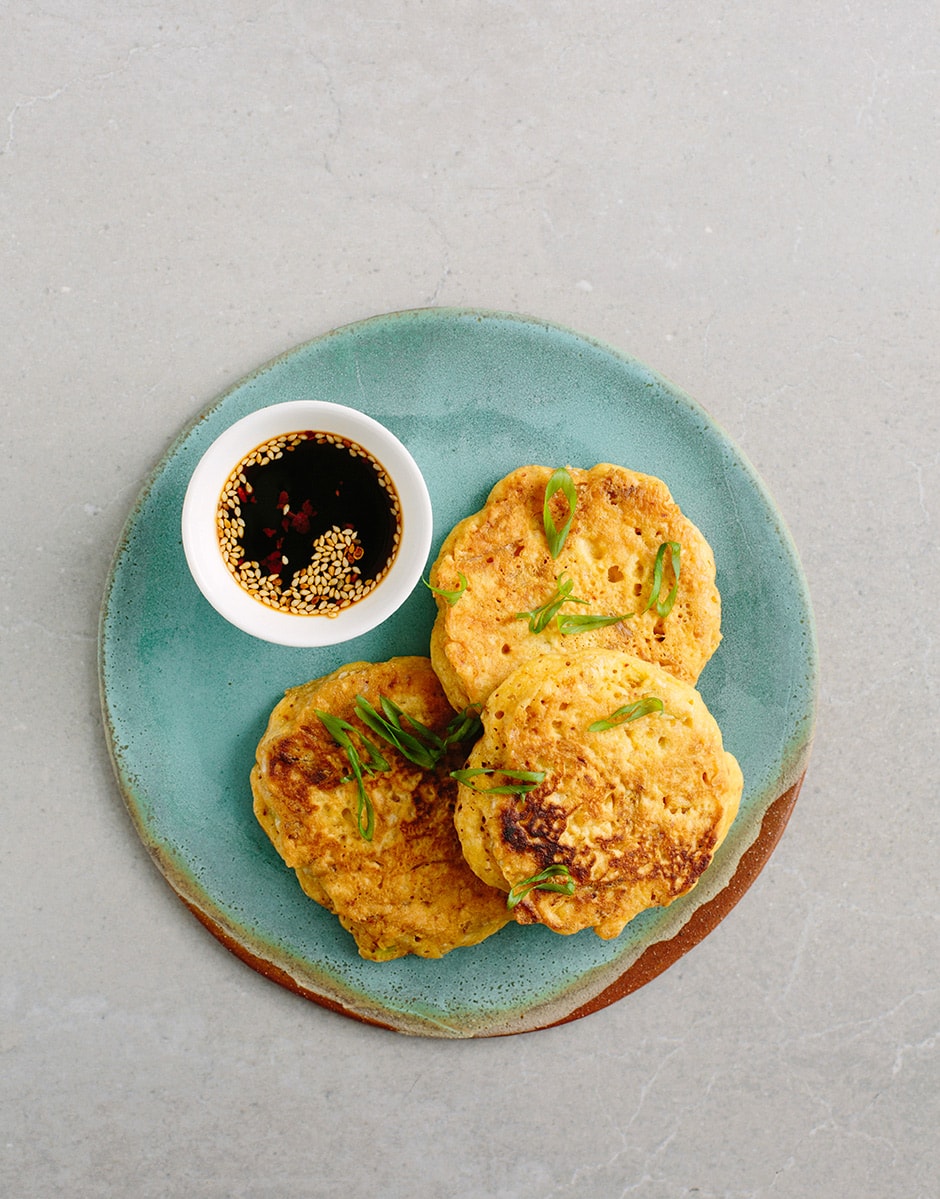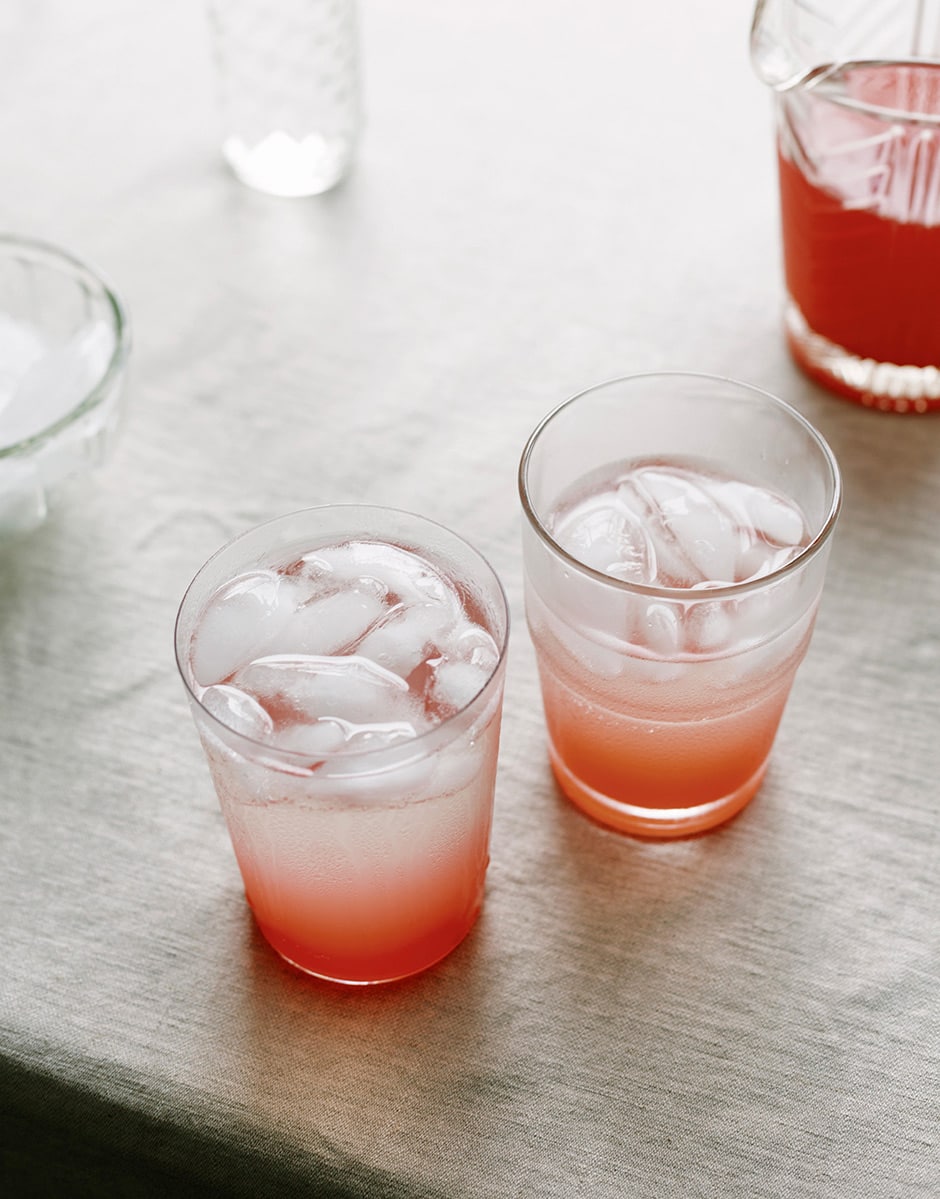The My Darling Lemon Thyme writer’s latest offering is full of flavours designed to be combined with ease according to what you have on hand.
As a chef turned food writer and recipe developer, my life revolves around food. I adore cooking but, like most people, I don’t have tons of spare time, so my everyday food is quick and easy, using readily available ingredients and simple techniques.
In the years I spent working as a chef, and now as a mother of two, I’ve learned little tricks to make cooking simpler through planning ahead, utilising leftovers and mastering basic recipes. It was with this in mind that the idea for this book, Every Day, began.
As a young chef, I carried a couple of notebooks with me containing handwritten ‘basic’ recipes to which I’d refer daily. In my role at a local café, it was the morning shift’s job to make a big batch of sweet muffins every day. We didn’t use different muffin recipes each time; instead, we used the same base recipe, adding whatever seasonal or frozen fruit we happened to have on hand. This is how chefs have always cooked, but I’ve noticed it’s not something home cooks always know how to do. I want to help change that, to empower you to be bold. If you only have rosemary and peaches but the recipe calls for thyme and apples, go with your gut and try it with rosemary and peaches instead! You can’t go wrong with simple seasonal changes.
Dotted throughout Every Day, you’ll find my ‘anything’ recipes with examples of how you can change things to suit your tastes or what you might have on hand. I encourage you to use your intuition, look to what’s in season and available around you, and have a play.
My main goal is to create recipes that are totally doable, every day of the week. I want you to feel confident in the kitchen and know that by cooking at home with simple, real-food ingredients, you’re making one of the most powerful decisions we can make as humans — the decision of what goes into our bodies.
Seedie hemp & orange muesli bars
Makes 16 bars
Gluten-free | Vegan
Ingredients
70g (1 cup) unsweetened shredded coconut
10g (½ cup) puffed millet/brown rice
70g (½ cup) pumpkin seeds
70g (½ cup) sunflower seeds
35g (¼ cup) hemp seed hearts
1 tablespoon sesame seeds
25g (¼ cup) tapioca flour
90g (½ cup) raisins or your favourite dried fruit, finely chopped if large
A good pinch of fine salt
250ml (1 cup) sunflower seed butter or your favourite nut butter
125ml (½ cup) brown rice syrup
2 teaspoons vanilla extract
Finely grated zest of 1 orange
85g dairy-free dark chocolate, melted (optional)
Right from the start of writing Every Day, I knew I wanted to perfect a great muesli bar, one made from nourishing ingredients, with not too much sugar and no nuts, so kids can take them to school. I’ve got to be honest, it took many trials, and I nearly gave up on getting the recipe right. But then I nailed it — best feeling ever, especially because this quickly became one of my favourite recipes in the book.
I’ve used homemade sunflower seed butter, but you can use store-bought if you prefer (it’s just a damn sight cheaper to make your own!).
That said, if nuts aren’t an issue for you, you can replace it with your favourite nut butter. Leave out the hemp seed hearts if they’re out of your price range; I add them for a boost of protein and omegas. Omit the orange zest when oranges aren’t in season or use frozen zest if you’ve planned ahead. And if you don’t like pumpkin seeds, increase the sunflower seeds to 1 cup.
Method
Preheat the oven to 160°C (320°F). Grease a 28 x 18cm slice tin and line it with baking paper, overlapping the sides by 2cm.
Combine the coconut, millet, seeds, flour, raisins and salt in a medium-sized bowl, and mix well. Add the sunflower seed butter, brown rice syrup, vanilla extract and orange zest, and mix until well combined, using your hands to mix if you find it easier, as I do.
Transfer the mixture to the tin, then use the back of an oiled spoon to press it in firmly and evenly. Bake for 20–25 minutes or until golden and firm to the touch. Remove from the oven and set aside to cool in the tin.
Drizzle the chocolate over the slice and allow to set before cutting into 16 bars. It’ll store in the fridge for up to a week, in an airtight container for up to 5 days or in the freezer for up to 3 months.
Tomato pilaf with black lentils & caramelised onion
Serves 4
Gluten-free | Vegan
Ingredients
115g (½ cup) black (beluga) lentils, rinsed well
4 cloves garlic, finely chopped
60ml (¼ cup) olive oil
250g tomatoes (I like to use cherry tomatoes), finely chopped
340g (1⅔ cups) white basmati rice, rinsed and drained well
750ml (3 cups) water
Fine salt, to taste
2 tablespoons olive oil
3 onions, finely sliced
Coriander leaves, roughly chopped, to serve
This delicious and nutritious almost-one-pan meal was inspired by Turkish tomato pilaf and mujadara, a tasty combination of rice, lentils and onions found throughout the Middle East. Using smart ways to extract every ounce of flavour from just a handful of simple ingredients, it makes the perfect midweek meal. You can use puy-style or brown lentils in place of black lentils, if you prefer.
Method
Place the lentils in a small saucepan, cover with water and bring to the boil. Reduce the heat and simmer for 15–20 minutes, or until just tender. Drain and set aside.
Heat a large, heavy-based frying pan over medium heat. Add the garlic and 60ml measure of oil and cook for 30 seconds before adding the tomato. Cook, stirring often, for 3–4 minutes or until soft and juicy.
Add the rice, stir, then add the water and a good pinch of salt. Bring to the boil, cover with a lid, reduce the heat to low and cook for 15 minutes. Remove from the heat and set aside with the lid on for a further 10 minutes.
To make the caramelised onions, as soon as your rice is happily cooking away, heat the 2 tablespoons of oil in a large, heavy-based frying pan over medium-high heat. Add the sliced onions and cook, stirring often, for 20–25 minutes or until deeply golden, taking care in the final 5–10 minutes to ensure they don’t catch on the bottom of the pan and burn. Season with salt. These caramelised onions can be prepared in advance and will store in a glass jar in the fridge for up to 3 days.
When the rice is cooked, remove the lid, stir through the lentils, adjust the seasoning if needed and serve topped with the caramelised onions and some chopped coriander.
Pea, mint & halloumi fritters
Makes approximately 12 fritters
Gluten-free
Ingredients
280g (2 cups) frozen peas
3 large free-range eggs
100g (¾ cup) chickpea flour
50g (½ cup) tapioca flour
1 teaspoon gluten- and aluminium-free baking powder
100g packet halloumi, grated
A small handful of mint leaves, roughly chopped
Fine salt and freshly ground black pepper, to taste
Olive oil
Tomato relish, to serve (optional)
A few years ago, we were at a family potluck dinner to which someone had brought pea, mint and halloumi fritters. My gluten-intolerant daughter desperately wanted to eat them but couldn’t because they were made with wheat flour, so I promised her I’d come up with a version she (and I) could eat — and here they are. I’ve also included a couple of variations below. One of my favourites are the kimchi fritters [pictured], which are inspired by the Korean kimchi pancakes I dream of being able to eat, but sadly can’t.
Method
Place the peas in a large, heatproof bowl, cover with boiling water and leave for 1 minute. Drain well, transfer to a small food processor and pulse until a coarse purée forms. Add the eggs and 60ml (¼ cup) water, and mix well to combine.
Sift the flours and baking powder into a medium-sized bowl, and whisk to combine. Pour the pea mixture into the dry ingredients, add the grated halloumi, mint leaves and a little salt and pepper, and mix until just combined.
Heat 2–3 tablespoons olive oil in a large frying pan over medium heat, then cook large spoonfuls of the batter for 2–3 minutes or until bubbles show on the top of each fritter and the underside is golden. Flip the fritters and cook for a few more minutes or until they’re golden and cooked through. Keep the fritters warm on a tray in an oven heated to low while you repeat the cooking process with the remaining batter.
Sprinkle the fritters with a little salt and serve with tomato relish.
Variations
Kimchi & spring onion fritters (pictured)
Omit the peas, halloumi and mint. Add 1½ cups roughly chopped kimchi, replace all or some of the water with kimchi juice, and add 1 finely sliced spring onion, 1 tablespoon toasted sesame oil and 2 teaspoons lightly toasted sesame seeds. These fritters are great served with a dipping sauce you can make with equal amounts of brown rice vinegar and gluten-free soy sauce, plus a pinch of dried chilli flakes and some lightly toasted sesame seeds.
Carrot, cumin & feta fritters
Omit the peas, halloumi and mint. Add 1 large carrot (grated), ¼ red onion (finely sliced), a handful of crumbled feta, a little roughly chopped coriander and ½ teaspoon ground cumin. These fritters are delicious served with a spicy tomato chutney such as tomato kasundi.
Sweetcorn & herb fritters
Omit the peas, halloumi and mint. Add 2 cups corn kernels (fresh or defrosted frozen) and a handful of soft herbs, such as chives, basil, flat-leaf parsley or coriander. These fritters are lovely served with basil pesto, good ol’ tomato sauce or your favourite relish.
Shrub
Makes approximately 1 litre (4 cups) syrup
Gluten-free | Vegan
Ingredients
1kg fruit, finely sliced
400g (2 cups) golden caster sugar
250–375ml (1–1½ cups) good-quality apple cider vinegar
Sparkling water, to serve
Tart and zingy all at once, shrubs — aka drinking vinegars — are a great way to harness the seasonal flavours of fruit, and a beautiful, natural alternative to fizzy drinks. You can use almost any fruit — the combinations of fruit with spices, herbs or flowers are endless! To get the most beneficial bacteria, look out for good-quality (preferably locally made) raw, organic and unpasteurised apple cider vinegar with the ‘mother’ in it.
Method
Combine the sliced fruit and sugar in a glass bowl or container, then mix well, cover and set aside on the benchtop for a couple of hours, stirring occasionally.
Transfer your container to the fridge and leave for 4–5 days. If you remember, give it a stir once a day. You’ll find that the juice from the fruit will mingle with the sugar to create a lovely fruit syrup.
After 4–5 days, strain the mixture through a fine sieve, saving the syrup and composting the fruit. (I’ve heard of people using the leftover fruit to cook with, but I find it way too sweet. You decide.) Combine the syrup and apple cider vinegar (250ml/1 cup if you like a less-prominent vinegar flavour, or 375ml/1½ cups if you like it stronger), then pour into a glass jar or bottle, seal and refrigerate for another 1–2 days before using (you can serve it straight away, but I think the flavour is much nicer if it’s had a little time to mingle).
To serve, pour 2–4 tablespoons of syrup into a glass and top up with soda/sparkling water and add ice, if you like. (Tip: if you go through lots of sparkling water, look into investing in a soda machine to cut down on plastic waste.) The syrup will keep indefinitely in the fridge.
Variations
Rhubarb & ginger shrub (pictured)
To balance out the tartness of the rhubarb, this shrub has slightly different ratios than other fruit versions and makes less syrup — approximately 500ml (2 cups).
Use 500g rhubarb (approximately 4–5 big stalks, ends trimmed and stalks finely sliced), 400g (2 cups) unrefined raw sugar and 1 tablespoon finely grated ginger. Follow the recipe above to make the syrup, then strain and mix with 250ml (1 cup) apple cider vinegar.
Strawberry & chamomile shrub
Use 1kg strawberries (hulled and sliced) and 2 tablespoons dried chamomile flowers or the contents of 2 chamomile teabags.
Plum, cardamom & black pepper shrub
Use 1kg plums (stones removed and finely sliced) and 1 teaspoon each of cardamom seeds and black peppercorns (roughly crushed).
Feijoa & ginger shrub
Use 1kg feijoas (unpeeled but with the ends trimmed) and 1 tablespoon finely grated ginger.
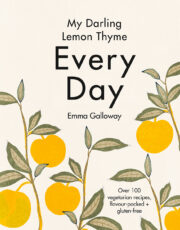
Edited extract from Every Day by Emma Galloway (HarperCollins, $60).
Words, styling & photography
